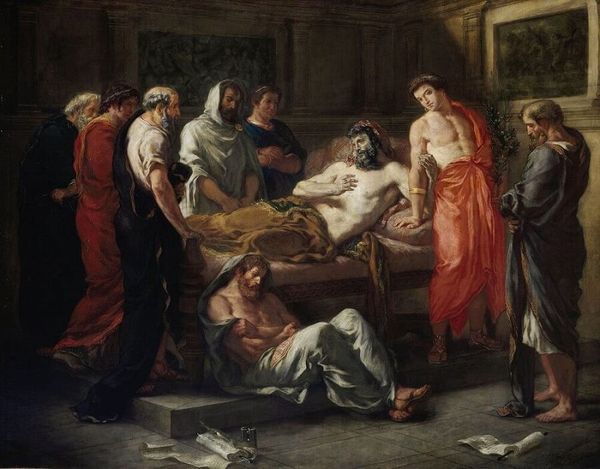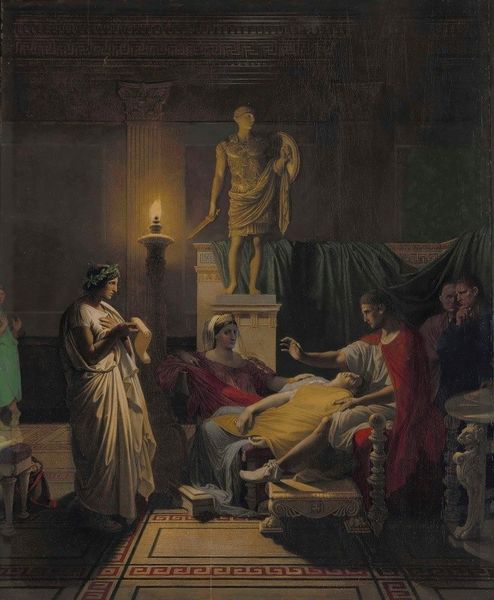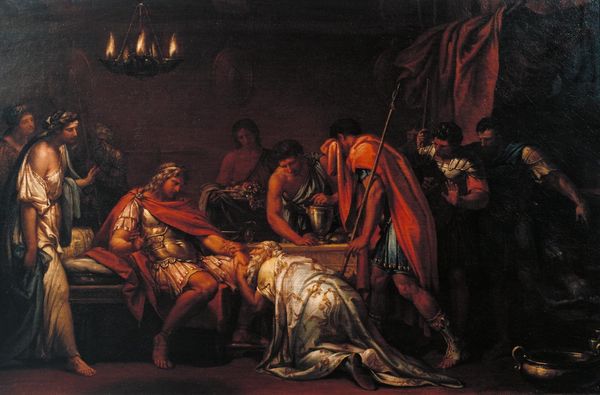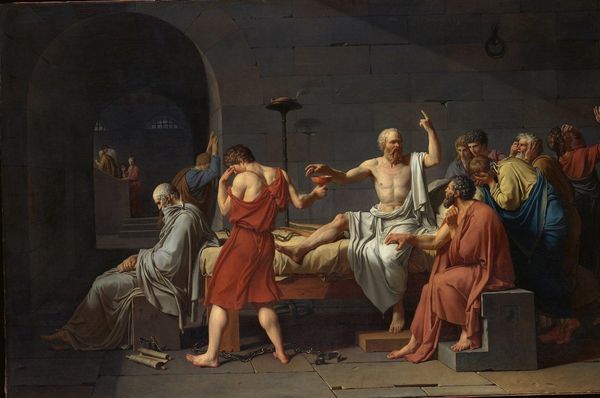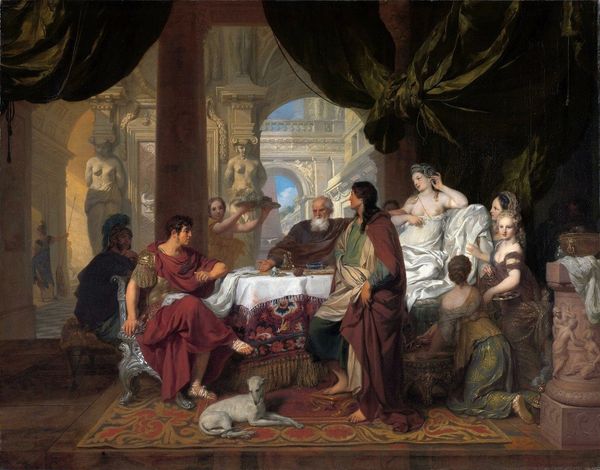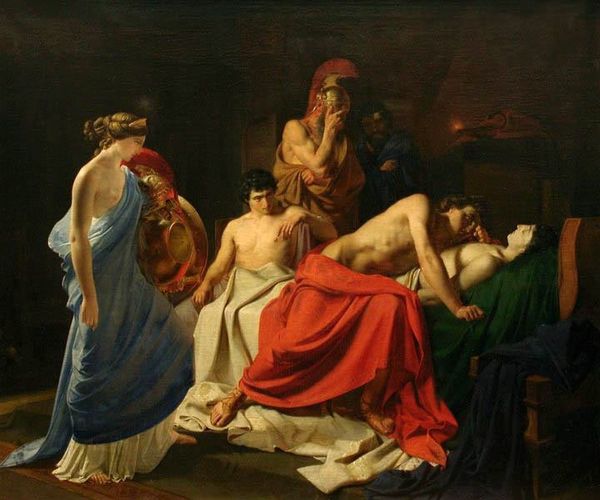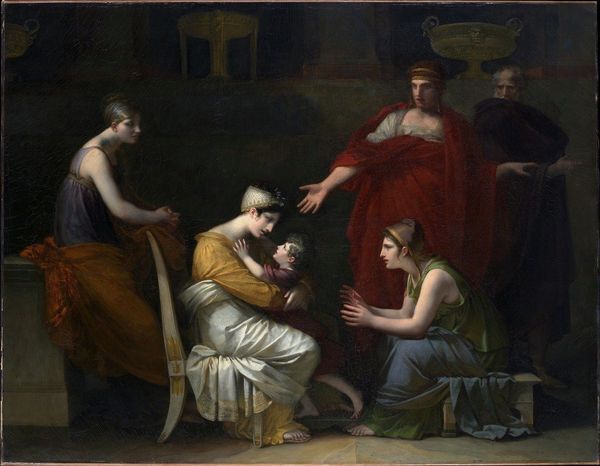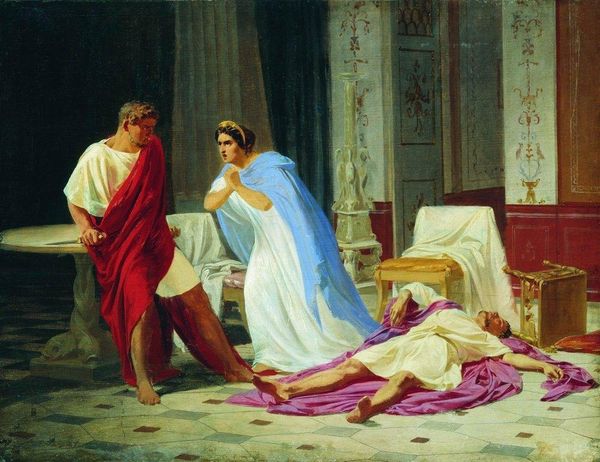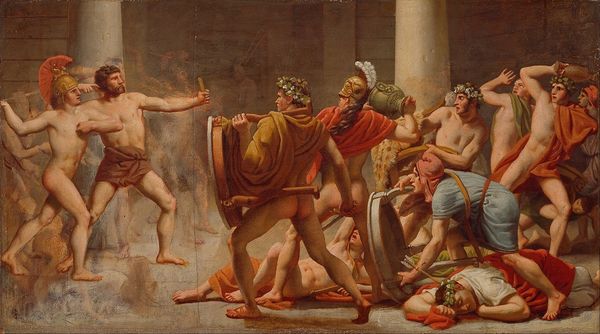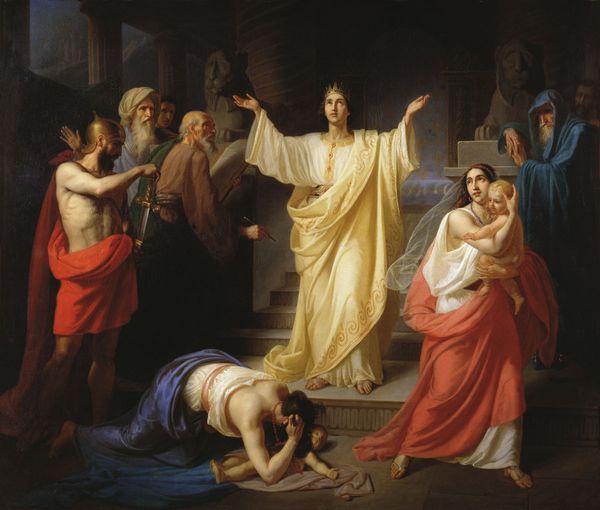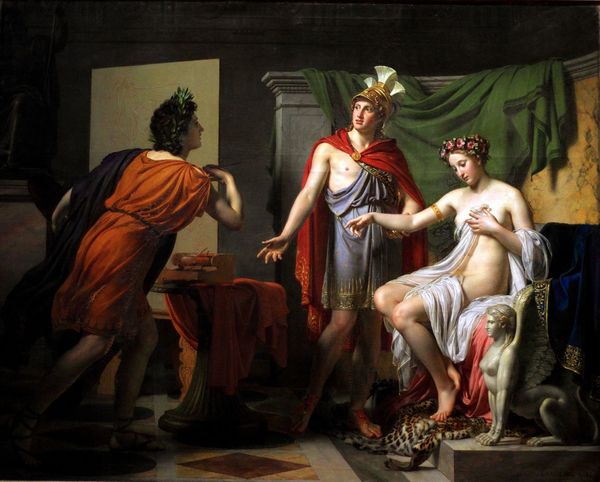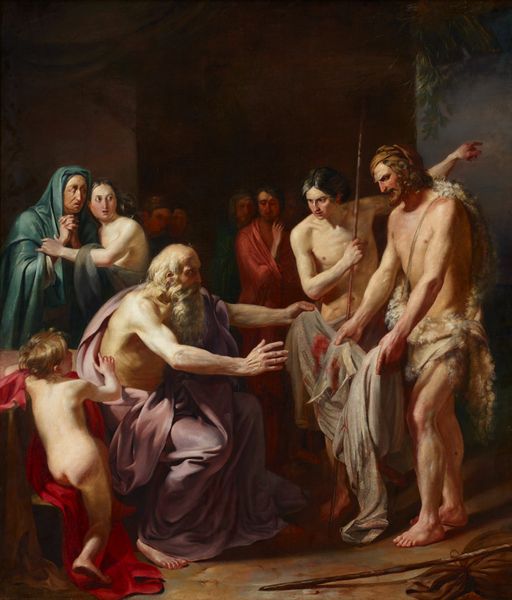
oil-paint
#
portrait
#
oil-paint
#
figuration
#
famous-people
#
genre-painting
#
history-painting
#
academic-art
Copyright: Public domain
Curator: The scene depicted here, by Henryk Siemiradzki, painted in 1870, is entitled *Alexander of Macedon Trust's the Doctor Philip*. Oil on canvas, its a wonderful example of academic art depicting a historical moment. Editor: It's definitely impressive, technically. My immediate sense is that this painting seems oddly...static. Like a carefully staged tableau vivant. Everyone is very posed. Curator: Interesting. As an academic work, its fabrication, as in the materials, the way Siemiradzki manufactured a historical event on canvas using oil paints and academic methodology, would’ve required rigorous study, preliminary sketches, and careful selection of materials. Consider the social context: the rising interest in historical and classical themes in the 19th century, which fueled the market for this type of work. The making of historical narratives was also deeply tied to issues of nationalism and imperialism at that time. Editor: Exactly. Think about what it means to present Alexander as this almost fragile figure. The vulnerability, the evident reliance on the wisdom of the educated older man, could have spoken volumes to late 19th century anxieties surrounding leadership and the maintenance of empires at a time when colonial projects faced growing scrutiny. Curator: Well, even the costumes would have been painstakingly researched and probably made to order, involving a range of artisans. Also, a tiger skin bedspread—consider the complex symbolism surrounding Alexander's conquests and the labor involved to create this single detail in the painting. It reinforces his identity as a great conqueror. Editor: And what does that mean for us, as viewers, consuming this image now? Who gets to claim Alexander as their ancestor, and who is written out of this carefully constructed history? Siemiradzki created this idealized vision of power, embedded in materials, and reinforces specific ideas. I question whom this history truly serves and empowers. Curator: Ultimately, analyzing the painting through a materialist lens, we find it encapsulates the artistry of creating such historical paintings during this period, making us wonder about its cultural relevance when created. Editor: For me, seeing *Alexander of Macedon Trusts the Doctor Philip*, as more than just brushstrokes and pigments, is realizing its constructed story, urging us to think about which stories we're asked to believe.
Comments
No comments
Be the first to comment and join the conversation on the ultimate creative platform.
